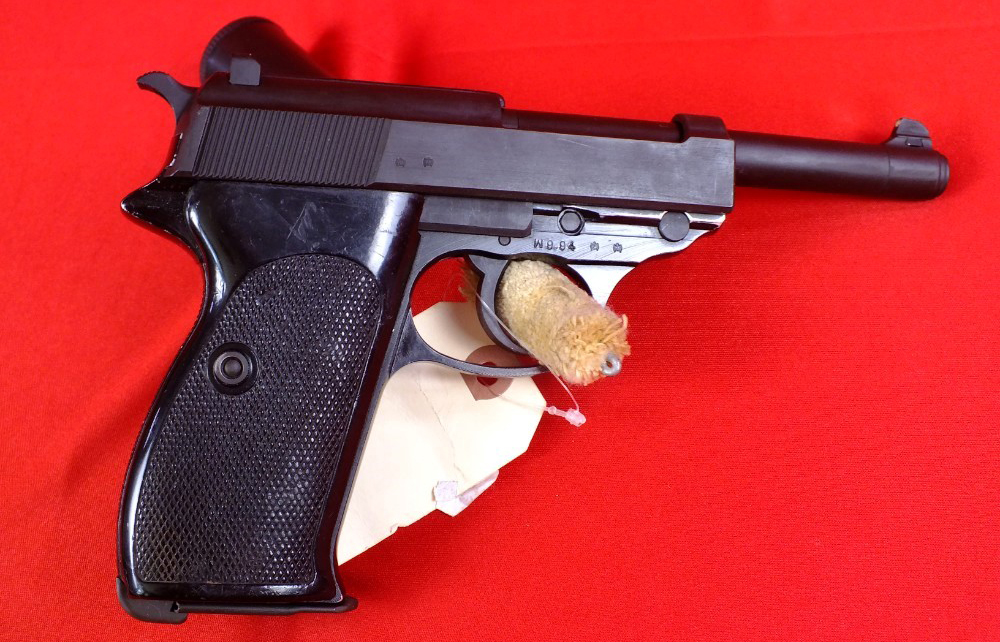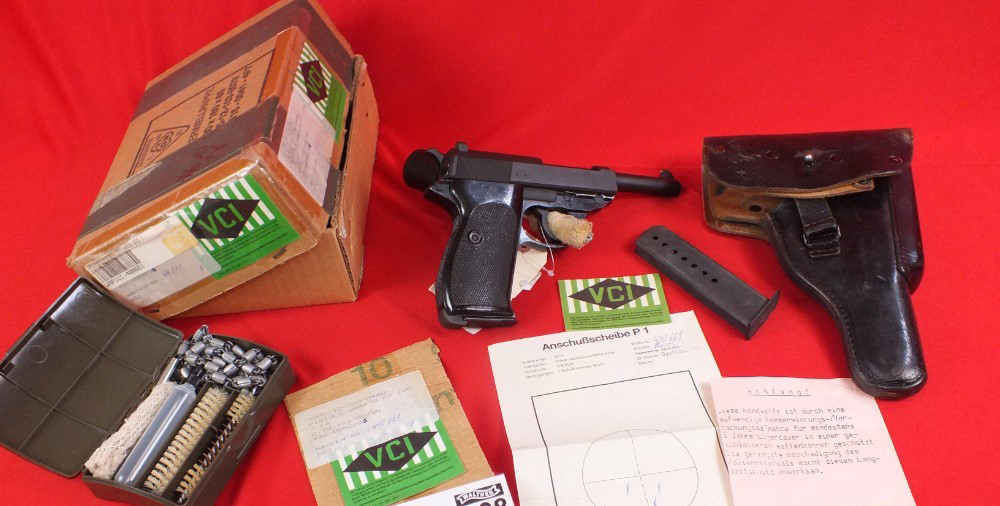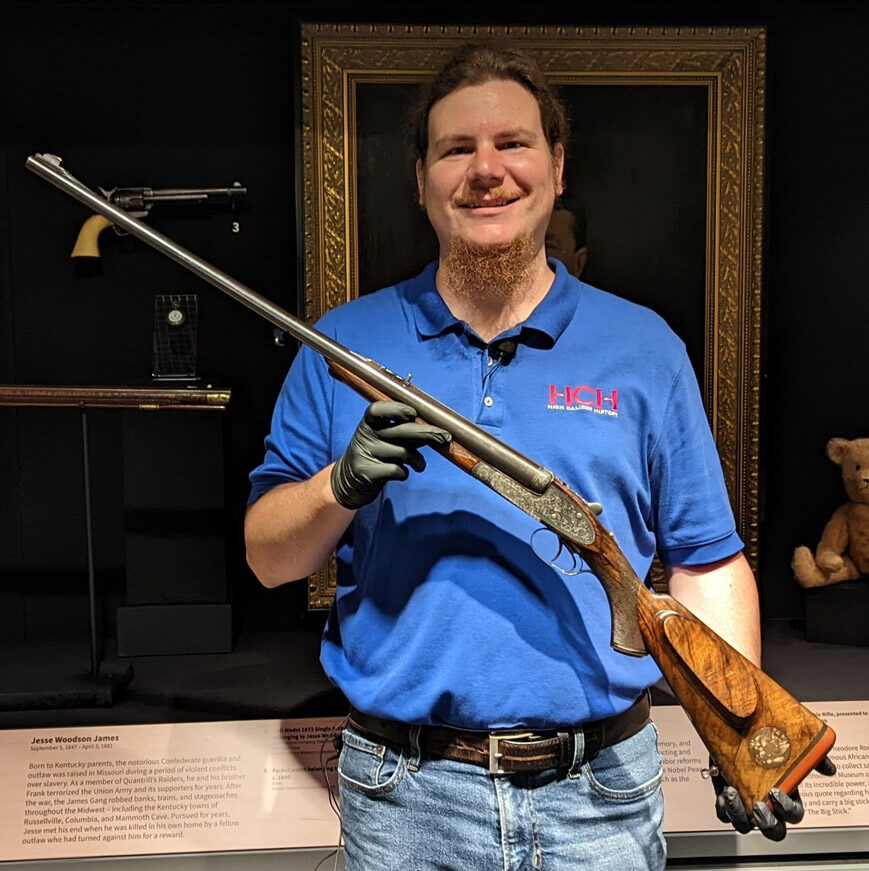
The Walther P38 is one of the most iconic handguns of the 20th century. It replaced the Luger P08, an iconic gun in its own right, in 1938. The guns first saw military service in 1939. By the time World War II ended in 1945, more than 1.2 million P38 pistols had been made.
Most people think that the P38 was a wartime gun and nothing more. In fact, that couldn’t be further from the truth. That misconception, however, can be forgiven since the gun underwent a name change. After the war, it became the Walther P1.
Post-war constraints on the German military and its armament caused Walther to cool its heels for a few years. However, by 1954, NATO accepted West Germany into the fold. With that acceptance came the effort to rebuild the Bundeswehr, and it was made clear that they wanted to field the P38.
Creating the Walther P1
Walther was ready almost instantaneously to start producing these new pistols. The first shipment of post-war P38s were delivered within two years. In 1963, the P38 designation was dropped and the design was now referred to as the Walther P1. Visually, the guns were essentially the same. Immediately upon picking one up, however, the main difference became evident immediately.
Wartime P38 pistols were built with steel frames and weighed in at 34 ounces. Post-war West German P1 pistols were made with lightweight aluminum alloy frames that weighed 28 ounces. While six ounces may not seem like a lot on paper, a weight reduction of almost a third of a pound makes a noticeable difference in something as small as a handgun.
These new aluminum alloy frames allowed Walther to complete a project that they had been working on for more than 20 years. While their PP and PPK pistols were already available with aluminum frames, the transition couldn’t be made to the P38 due to the greater recoil generated by 9mm ammo.
By 1955, however, metallurgy advancements that were developed for the wartime aviation industry had spilled over into arms manufacturing. The result was that the P1 was a lighter and stronger pistol. It could withstand firing of thousands of rounds of 9mm ammo; that was not possible with pre-war experimental P38 pistols.
The Walther P1 served faithfully as West Germany’s official sidearm until 1980. At that time, the gun’s design, which had remained essentially unchanged since it had been introduced in 1938, was now more than 40 years old. A lot had changed in the world of arms development since then. West Germany was looking to the future that included a new, more modern pistol.
The Story of a Pistol
The Walther P1 pistol offered as part of the August Collectors Elite Auctions is the complete package, as it were. Included are the pistol, two magazines, a holster, an owner’s manual, a test target, cleaning kit and the original shipping box from when the gun was imported into the United States.
You can learn a great deal from the markings found on a gun. This P1 is no exception. According to the 7/77 date on this pistol’s slide, it was made in July 1977. It is a late model having been produced just three years before the phase-out began. On the left side at the front of the slide, as well as above the trigger, a dot-in-circle denotes an in-house acceptance or quality control mark from the Walther factory.
A four-pointed star after the slide date, as well as on the slide release indicate that these are parts that have been modified or updated from the original design. The Bw above the trigger on the left side indicates that the gun was issued to the Bundeswehr. Eagles with downward sloping wings and numbers under them on the slide and frame are Bundeswehr acceptance marks.
On the opposite side above the trigger, we see W 9.94. This indicates that the gun went through the repair facility at St. Wendel in September 1994. On the bottom edge of the left side of the slide is a discrete import marking from when the gun came into the United States. It’s interesting to note that the gun had been reworked so close to the import date of June 1996 that is seen on the shipping box.
Information can also be gathered from accessories accompanying the gun. For example, the inside flap of the holster is dated November 1977. It fits very close in time to when the slide was made nine months earlier.
Overall, this is a really great time capsule package that tells a very complete story of the P38’s post-war life as the Walther P1. From a collector’s standpoint, it would be hard to improve on this complete package.

About the Author
-
Logan Metesh is an arms historian with a focus on history and development. He has a degree in historic preservation and has worked for the National Park Service and the Smithsonian Institution. The ease with which he can recall obscure historical facts and figures makes him very good at Jeopardy!, but exceptionally bad at geometry. Over the years, he has contributed to multiple books and written hundreds of articles for different publications. He is the owner of High Caliber History LLC and the host of the No Lowballers Podcast.
View all posts
